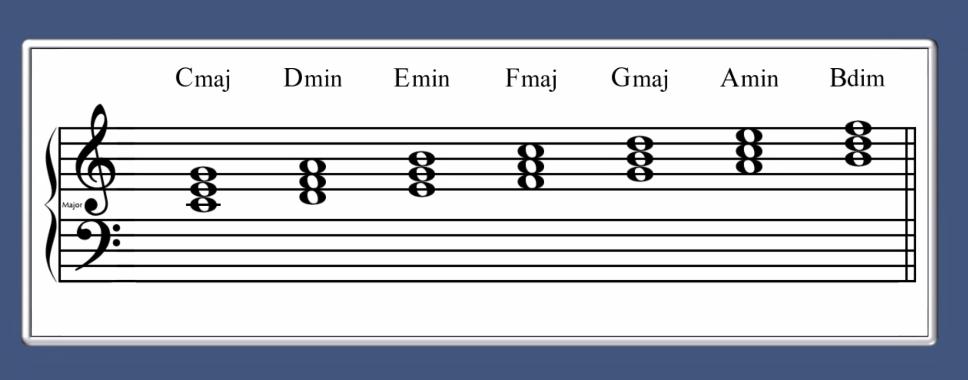The first lesson was intended to give you a taste of improvising using a simple bass line and a blues scale. We now need to explain a little bit of theory concerning how to construct chords and also how to read chord symbols. The melody of a song is harmonised with many different kinds of chords which form a chord progression. When a jazz musician solos over a standard song he/she has to be aware of and understand the chords used in order to choose appropriate notes to fit the chords. In this lesson I will cover Diatonic Triads. Triads are three note chords and Diatonic means that the chords are derived from the notes of a key. You can build a Triad on every note of a scale by adding a note which is three letter names above it (eg add E above a C) and a further note which is five letter names above it (C E G). If you do this on each note in the key you will construct a series of Diatonic Triads. The examples below show the Diatonic Triads in the key of C Major named in two different ways, one is using Roman Numerals (this is the way they are named in traditional harmony and is helpful because you think of that chord in relation to the key that you're in) and the second is using letter names and symbols to show what type of Triad they are.


There are four types of Triad, Major, Minor, Augmented and Diminished and three of these are formed on Major Scales. An upper case Roman Numeral denotes Major (maj in the letter names), lower case denotes Minor (min in letter names) and a circle after the number denotes Diminished (dim or a circle in letter names). Augmented triads are not found in the Diatonic Triads in a Major Key. To really understand the different types of chords a good knowledge of musical intervals is helpful and I explain these in the video below. However if you are feeling a bit overwhelmed and feel like giving up already then don't worry, in the video below the one about Intervals I explain how to identify chords from the intervals in them but also a quick and easy way just counting semitones. At this point you don't really need to fully absorb everything, just the basics of how to build chords and the rest can wait til later.